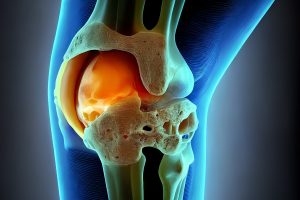America’s health care workforce is under unprecedented strain, and leaders of the medical profession are scrambling to shore up doctors and nurses who are burning out in record numbers.
Nearly two-thirds (63%) of a nationwide group of doctors and nurses said they are experiencing a moderate or great deal of burnout at work, according to a new HealthDay-Harris Poll online survey.
Those numbers jibe with figures from top medical associations, officials said.
For example, only 57% of doctors say they would choose medicine as a profession again, compared with 72% the year before, said Dr. Christine Sinsky, vice president of professional satisfaction at the American Medical Association.
“Likewise, a year ago, 40% of physicians felt highly professionally satisfied. A year later, only 22%,” Sinsky said during a HealthDay Now interview. “So, I think a picture of a workforce in peril is coming into focus.”
The National Academy of Medicine has seen a disturbingly similar trend.
“Even before COVID, about 40% and up to 50% of doctors and nurses are reporting burnout, distress, anxiety,” Dr. Victor Dzau, president of the National Academy of Medicine, told HealthDay Now. “And since COVID, the numbers have gone up to 70 to 90%.”
Understaffing is the greatest contributor to burnout, with 66% of primary care physicians and 75% of nurses citing it in the HealthDay-Harris Poll survey.
The amount of daily paperwork is the second greatest contributor, cited by 58% of doctors and 51% of nurses.
Electronic health records (EHRs) are behind a lot of this paperwork stress, Sinsky noted.
“It takes longer to do the same work in the electronic health record than it used to take without the electronic health record,” Sinsky said, noting that much of the paperwork previously done by support staff has been pushed to doctors, nurses and physician’s assistants as a result of EHRs.
“Physicians are finding themselves with two hours of work every night at home,” Sinsky said. “After the kids go to bed, physicians spend two hours on their EHR and desk work for every one hour of direct face time with patients. You can imagine how dispiriting that is to physicians, and how that’s not really what patients want either.”
Doctors also cite the time they spend communicating with insurance companies on their patients’ behalf as a source of burnout – 38% of primary care physicians, versus just 20% of nurses.
This burnout can directly affect the quality of care a patient receives, Dzau said, because physicians get less sleep and are more likely to make mistakes.
“If they were suffering, then patient care would suffer,” Dzau said.
So, what can be done to keep health care professionals safe, secure and on the job?
The implementation of EHRs needs serious rethinking, to move a lot of the burden off of doctors and nurses, Sinsky said.
“I think all organizations should move toward an electronic health record. I think that’s just an essential piece of care. But we also have to realize that it’s not just how the electronic health record is designed, but it’s how it’s implemented and how it’s regulated that make a difference,” Sinsky said.
In fact, Sinsky believes that reform should go even further than how EHRs are now handled.
“I think that health systems, hospitals, clinics, need to focus their efforts on fixing the workplace, rather than fixing the worker,” Sinsky said.
The National Academy of Medicine has a report recommending specific workplace improvements, Dzau said. These include:
- Creating and sustaining a positive working environment and culture
- Regularly reassessing workplace quality
- Providing mental health support to workers
- Addressing the burden of paperwork
- Recruiting a diverse workforce
“We’re rolling it out in a major campaign to have people take them on,” Dzau said. “I think we’re getting tremendous interest. We have hundreds of organizations endorsing this.”
In the meantime, the HealthDay-Harris Poll survey shows that doctors and nurses are taking steps to care for themselves.
When asked how they manage burnout, the respondents cited a number of coping strategies: exercise, counseling, maintaining friendships outside medicine, setting up boundaries around work, talking things out with their spouse.
“I stopped working full-time one year ago and now work several part-time jobs that provide me much more flexibility and dramatic reduction in take-home work,” one primary care physician responded.
“I have stopped working overtime,” a nurse commented. “I have begun exercising and actively avoiding work topics while at home.”
“I try to take one week off every 3 months,” another nurse said. “I work very hard to complete patient charts before the end of my day rather than cutting into family time and time off.”
Sinsky said she counsels health care workers that “it’s important to realize that burnout isn’t your fault.”
“It doesn’t reflect a weakness on your part. It’s not that you have a personality flaw,” Sinsky said. “Recognize that burnout really is related to the environment in which one works.”
Sinsky also urges that health care professionals take the sort of self-care measures cited in the survey.
“I think the most important thing for individual physicians to do is to work within their system to help to create a more manageable work environment for themselves and for everyone who’s in that system,” Sinsky said.
More information
Mental Health America has more about health care worker burnout.
SOURCES: Christine Sinsky, MD, vice president, professional satisfaction, American Medical Association; Victor Dzau, MD, president, National Academy of Medicine
Copyright © 2024 HealthDay. All rights reserved.













-300x200.jpeg)
-300x213.jpeg)










